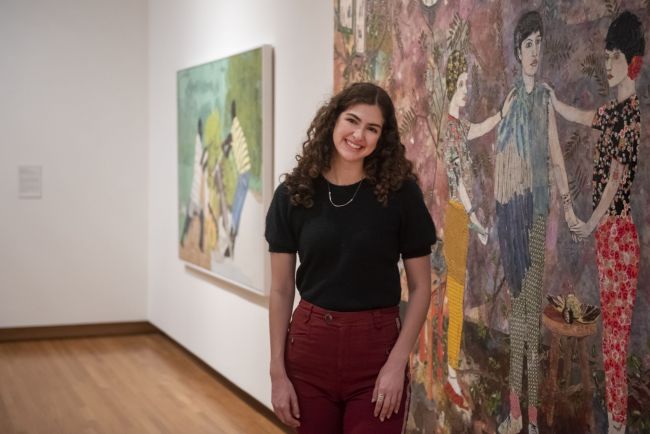Emily Normand is a museum educator, academic, and art historian. She has served as a graduate teaching assistant at the Nasher Musuem of Art where she worked closely with both the Academic Initiatives Department at the Museum and Duke University faculty members to construct dynamic lesson plans within the gallery spaces. She has also been a Duke University Scholar, a Kellogg International Scholar, a Rome International Scholar, and a College of Arts and Letters Dean’s Fellow. She is the current Lilly Endowment Museum Fellow for Spirituality and Religion in the Visual Arts at the Raclin Murphy Museum of Art on the University of Notre Dame’s campus. She holds a BA from the Program of Liberal Studies at Notre Dame University and earned a Master’s of Theological Studies with a Certificate of Theology and the Arts from Duke Divinity School in 2023. Learn more about her work at the Nasher Museum at nasher.duke.edu.
Let’s start at the beginning. You earned your bachelor’s degree at Notre Dame. What did you study? How did your time there prepare you, if at all, for further theological study? Did you encounter the arts during your time there? Or did your interest in art begin at an earlier point?
I was in the Program of Liberal Studies (PLS) at Notre Dame, which is an integral Great Books program spanning the arts, history, literature, natural science, philosophy, politics, and theology. Since I had a broad undergraduate curriculum, I decided to concentrate my research through the Kellogg Institute for International Studies. My Kellogg faculty mentor, Dr. Peter Casarella, was in the theology department, so naturally (and thankfully), my research bent toward a theological line of inquiry. I met with Dr. Casarella initially because I was interested in theological aesthetics, and together, we ended up conducting research on the approbation of religiosidad popular by the Catholic Church from the perspective of a key player in the movement.
My interest in theological aesthetics, though, reaches back to my small Catholic high school in Phoenix, Arizona. I took a unique class called “Project Beauty” that exposed me to opera, literature, and music. And most impressively for me, we visited the Phoenix Art Museum. The visual arts had a way of provoking my imagination that I couldn’t quite shake. On one occasion, my teacher launched an offensive against Duchamp’s Fountain. I remember thinking that there was something provocative about the work. That inkling of curiosity led to my interest in theological aesthetics. I wanted to get to the bottom of what made something “good” or “bad” and what that had to do with the nature of being. I still haven’t quite unlocked the answer to that question, but what I have learned, though, was that those who dismissed Duchamp were asking the wrong question. The question in the modern age should not be “what is the work picturing?” but “what is the work doing?” Art is not primarily a matter of depiction but representation. I owe this revolutionary insight to Dr. Jonathan Anderson. Once we start asking the right questions about modern and contemporary art, we should continue along all relevant lines of inquiry, which more often than not, include theology.
